Two weeks past midsummer in June 2019, I stood on a cliff edge at the tip of Cape Clear Island, the Fastnet lighthouse a hazy silhouette against the horizon. I was at Ireland's southernmost point, a place where, centuries ago, sailors thought they might fall off. I was midway through my first walk along the west coast of Ireland, in the footsteps of my great-grandmother Ellen Cotter, a lacemaker.
At the end of the 19th century her skill with a crochet hook had allowed her to dodge a life of domestic service and teach her trade here, in a wooden school at Cape Clear’s North Harbour. She became the first of a series of women connected to this shoreline whom I would follow up Ireland’s west coast over the next three months, as I walked in the paths of other women who had also somehow defied expectation – who had been, in their own way, “wild.”
I decided that a summer walking and thinking, through the lives of Irish women who had lived and worked along this Atlantic shore, might help me find meaning in my travels
I had been to Cape Clear once before, in 2016, where with my mother's family I had celebrated the story of my great-grandfather John K, a skilful sailor involved in the Howth gun-running, in which he helped to unload the rifles used in the fight for Irish independence. On that occasion I had sat mutely, my cousins reciting some poems he wrote in Irish, while we all drank ourselves into oblivion.
I have pictures from that weekend – myself and my cousins leaning back against a whitewashed wall, cigarettes in hand. It was only later that I realised that, in the excitement of my great-grandfather’s poetry, sailing, fishing and fighting, my great-grandmother and her story had been overlooked.
Three years later, I was newly bestowed with an Irish passport, sitting in my little flat in London and planning a trip along the Wild Atlantic Way. I remembered my experience on Cape Clear, and it led me to think about the other stories of women who lived on this Atlantic coastline. Had they also been overlooked?
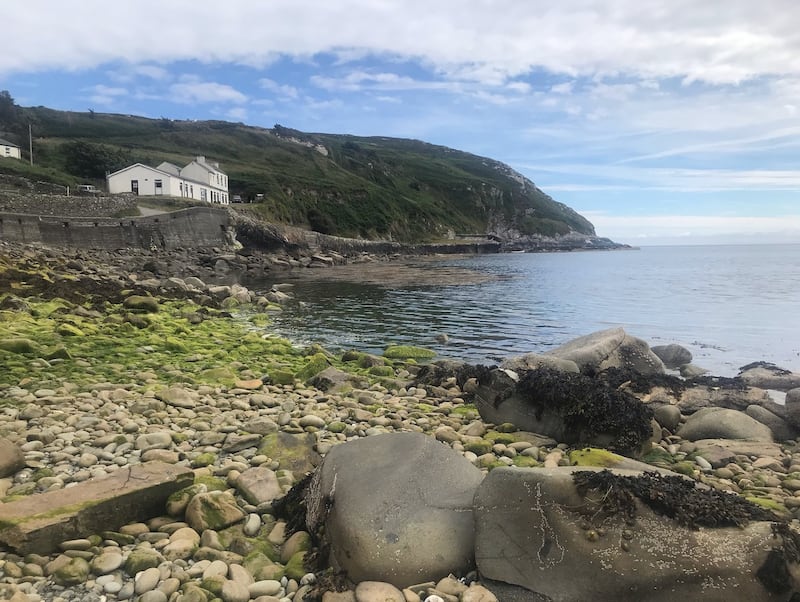
Although my parents are both Irish, I have always prided myself on being a die-hard Londoner. But in 2019, things were shifting. I had just turned 40, and I was single and newly freelance in my job as a television producer. I decided that a summer walking and thinking, through the lives of Irish women who had lived and worked along this Atlantic shore, might help me find meaning in my travels.
My aim was to travel all the way up the western coastline to the tip of Donegal. Leaving Cape Clear, and on to the mainland, my next walks were in footsteps of Ellen Hutchins, whose life was a far cry from the island woman I had found on Cape.
In the 1790s, Ellen Hutchins had somehow, instead of being wed, managed to spend hours tramping the shores, mountains and woodlands of Bantry Bay and the Coomhola mountains, gathering specimens and becoming in the process the greatest Irish field botanist of her age. A hidden figure, as unassuming as the quiet, non-flowering seaweed, mosses, liverworts and lichens she collected, Hutchins mapped this Atlantic landscape.
Over eight years of a short adult life, with extraordinary zeal and concentration, she identified, recorded and studied more than 1,100 species. Walking in her footsteps, I began to see the landscape in a new way – as a place of as yet undiscovered beauty, of miniature tidal worlds of neon green gutweed and dark red maiden’s hair.
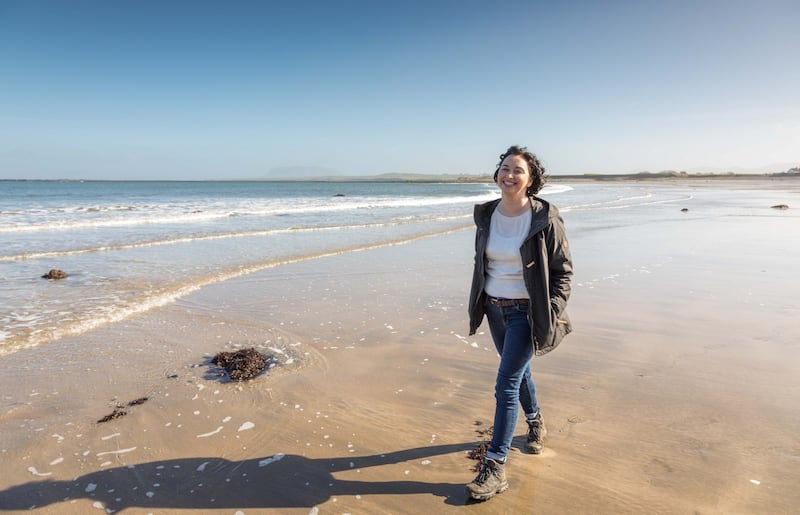
Ellen Hutchins’s story captivated me, both while walking and in the research I undertook afterwards. The deeper I explored her story the more I saw that she had lived both an intense and lonely existence. I had assumed that as a member of the landowning gentry, she had lived in cossetted privilege. But slowly, someone different began to surface – a woman caught in the crossfire of a bitter family battle about inheritance and put to use as a de facto nursemaid, caring for both her ailing mother and her younger brother. With no company her own age or marriage prospects to speak of, this landscape gave Ellen Hutchins a purpose in a world where she felt isolated and put upon.
Walking here was her escape and she walked alone – able to do so, she said in her letters, only because of the remote location. I was also beginning to revel in the safeness I felt walking alone in Ireland.
"Better alone than in bad company," the skipper on the ferry at Cape Clear had said to me, while the owner of an eccentric bed and breakfast in Skibbereen had told me I was part of a movement of women travelling solo she was seeing lately. People were encouraging, but still they felt they had to comment.
I moved up the shoreline. A night in a Glengarriff cabin introduced me to Ireland's oceanic oak forests; in Allihies, a former midwife helped me plan a walk by exactly predicting when the rain would stop by looking at the sea.
By early July, I had reached the pier at Dunquin, a black tarred curragh behind me, where I waited for the small ferry that would take me out to the Great Blasket Island. The sea was, in the words of the great storyteller Peig Sayers, in whose home I would stay, "as calm as new milk."
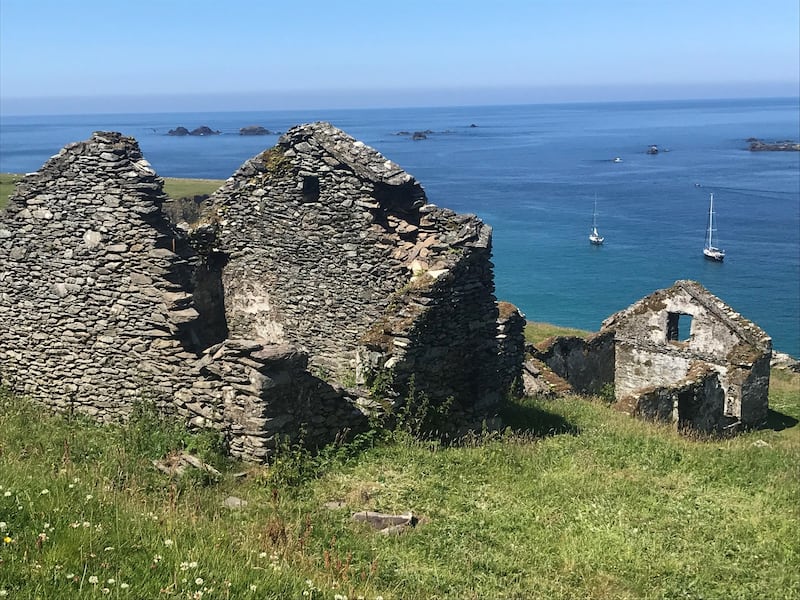
Having grown up in England, my view of Big Peig, or Peg Mhór, as I learnt she was called, is untouched by learning Irish. And despite being warned by both family and friends that Peig was both dour and sanctimonious, when I started reading her autobiography I was surprised at how much I enjoyed it. But then, I did read it in the best circumstances.
The Great Blasket is now uninhabited, except for a cafe for day-trippers and a few remaining cottages, available for tourists to delight in splendid isolation. I was booked for my overnight stay in the house where Peig lived from about 1910, and where scholars and folklorists flocked to visit her.
The good weather held up and my four-hour walk around this long and narrow island Peig describes as “shaped like a whale sleeping on the surface of the ocean,” became a highlight of my travels. I saw the cottage in which she had 10 children, gaining a sense of a long past way of life in which privacy was unheard of.
Reading Peig’s words while also walking in her landscape revealed to me how central the sea was to life on the island. I was able to conjure the excitement across the island when mackerel shoaled on the surface of the water; her utter dread of her husband not returning from sea; her fright spilling over as she tries to keep her children from playing close to the shore.
Peig spares no one – not even herself, in her tales of everyday life. From the day 18-year-old Peig belts a cocky houseboy with a rotten turnip, to scraps over men in milk houses and being abandoned by her father in a drunken day at the races, the joy of Peig is in her honesty. The ability to hold your own in conversation, to tell a good story, is considered by Peig to be the ultimate mark of character – a quality as highly esteemed as generosity towards your neighbours and this, I found was the thing I loved most about her.
Travelling alone, I was also beginning to realise that when people spoke to me, they were also more open about their lives
In London, at school and then at work, people have always remarked on how much I chat. I often try to censor myself, feeling that I’m taking up more than my share of airtime but I unexpectedly felt completely at home in this element of my character in Ireland. People chatted to me everywhere – swimming in the sea, on the top of mountains, from the car in the middle of the road. It was just part of the flow. I began to feel more like myself.
Travelling alone, I was also beginning to realise that when people spoke to me, they were also more open about their lives. It was as if by being alone, by passing through, I had allowed them to reveal themselves as a whole person, apart from their partners or children.
In my mother's home county of Limerick I crossed the Shannon, moving up through south Clare until I reached Doolin. From there, I walked the Cliffs of Moher, in the footsteps of one of my heroines – the writer Edna O'Brien – really a country rather than coastal girl. But in 1976 she had walked along these cliffs while being filmed by a British camera crew, to promote her book Mother Ireland; a travelogue in which she puts forward her view of Ireland from the distance of London exile. In it she wrote of how Ireland is, and has been since its earliest writings, portrayed as a woman – a womb, a cave, a cow, a Rosaleen, a sow, a bride, a harlot, and of course the gaunt Hag of Beare.
Reading these words, she walked in beautiful soft 16mm along the iconic cliffs – a symbol of Ireland itself. Dressed in a long bright red skirt that moved with the wind, she looked joyful, reckless and romantic. I wonder if she was playing up to the scandalous reputation that had followed her after her 1960 coming of age masterpiece The Country Girls, had been banned.
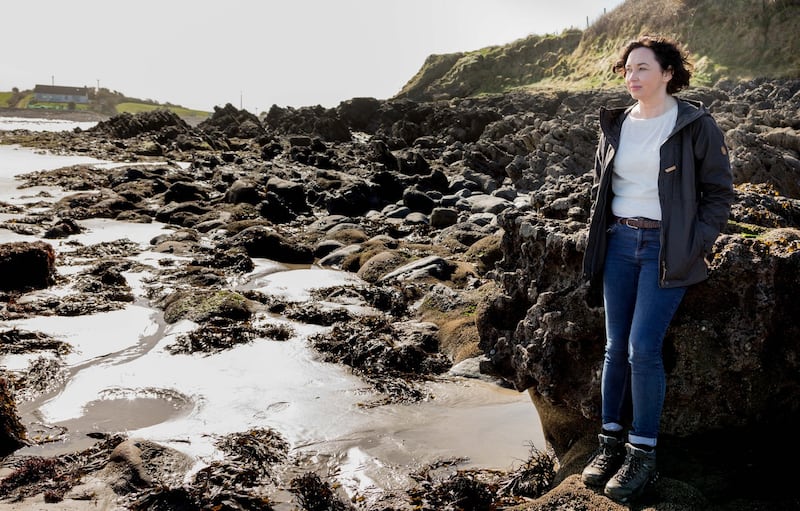
The part of the cliffs she walked, by O’Brien’s tower, was midway through my 14-kilometre hike from Doolin up to Hag’s Head. Here the rocks have eroded over millennia into the shape of a woman’s head looking out to sea. Walking along the exposed cliff edge, I watched huge swathes of foam forming around the shoreline. Slowly, the Cliffs of Moher – iconic, black and intimidating – revealed themselves in the distance. And then the rain began. The mist rolled in, so thick that I could see no more than a metre in front of me. I was simply a body moving through a blank landscape, about to get spectacularly, torrentially, soaked.
The weather had turned and a week later I was sea-lashed again, standing on the deck of the hooker taking me out to the Aran Islands. All around the sea rose and fell in great mountains. I gripped the iron handrails as if my life depended on it. I was lucky the hooker was even running, the man taking tickets told me before asking when we were going for a drink – he was looking for a wife he said.
Sadly, I had other plans. On Inish Oírr I met Una McDonagh, a traditional Aran knitter who taught me a few stitches in wool that smelt of lanolin and oil; while on Inis Mór I had become captivated by visiting the site of an image made by the contemporary Irish artist Dorothy Cross. In the photograph from 2008, a woman – Cross herself – was pictured naked, floating in the water that ebbs and flows with the tides that fill Pol na Pbéist, the Worm Hole: a huge, perfectly rectangular pool in the limestone rock.
The path towards the Worm Hole is across a cracked surface of pure karst limestone. Occasionally I came across a glacial erratic – a lichen clad granite rock or boulder dumped here 10,000 years ago at the end of the last Ice Age. The sea was cyan, the waves rolling in towards the shore.
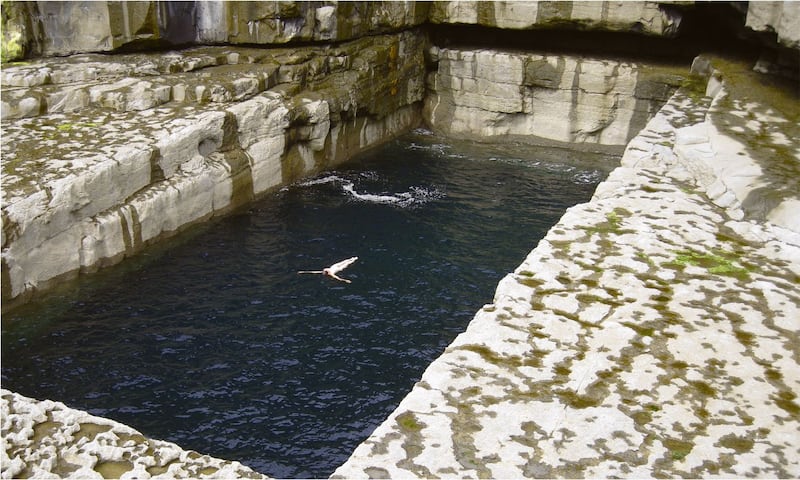
Underneath the stepped cliffs I stared down into the bottom of the pool, where the ocean surged in and out; the dark turquoise water propelled forward by the tide, exploding into white, contemplating what Cross had said about the woman floating. How we are all limited by something, held within some sort of frame that we are, inevitably, trying to break out of.
Travelling up through Connemara and then into Mayo, the landscape was beginning to feel more familiar as I neared County Sligo where my parents have lived for the last 20 years. On Clare Island, I walked the paths of my namesake, the 16th-century ruler Gráinne Mhaol, whose life took place against the background of the Tudor conquest of Ireland. Back in England, months afterwards, reading about her triumphs and rebellions and seeing how clearly she is recorded in Elizabethan court documents, it is still the memory of swimming in the small sandy cove beneath her stronghold that makes her real.
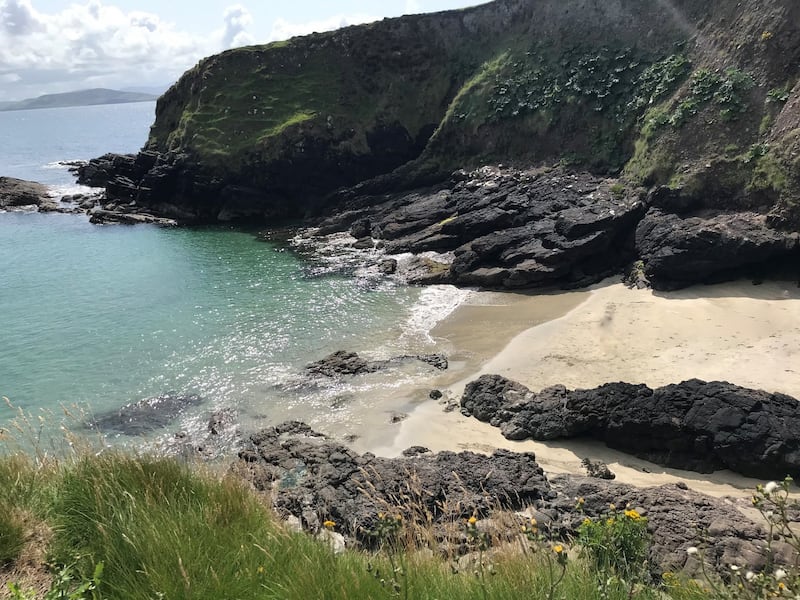
Sometimes, my walks left me with more questions than answers. In Enniscrone, I knew that one of Yeats' sisters, Lily, had been born. But finding her connection to the landscape proved more difficult; her embroideries and paintings dispersed across collections and her life intertwined with that of her sister, Lolly. Hiking Knocknarea, up to the supposed burial chamber of the iron age Queen Maeve of Connaught – a formidable warrior whose round cairn has in death, has actually become part of the Sligo landscape – I found myself asking whether she really had five husbands? Was she actually buried upright to face her enemies? Perhaps with a story as good as hers the truth doesn't matter.
For the final part of my journey up the coastline I was joined by two women from my swimming club in London – Rhian and Jacqueline, both of whom I have swum and brunched with across London’s lidos almost every Sunday for the past three years. Together we experienced the tingling freshness of Ireland’s Atlantic waters.
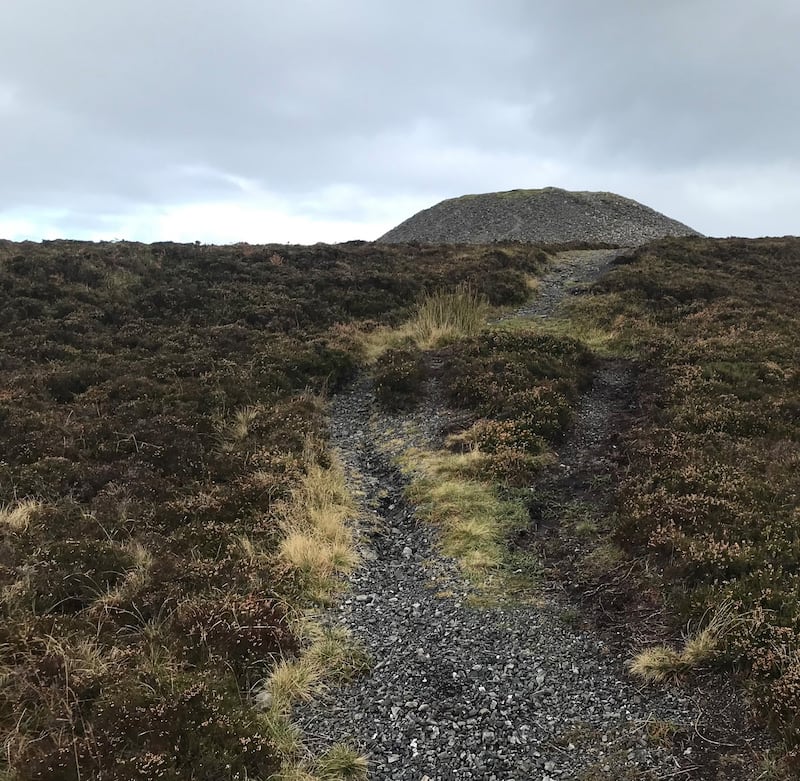
We swam in a tidal pool at Mullaghmore, ran into the sea at Streedagh and surfed at Rossnowlagh. And of course we walked: along Slieve League's Pilgrim's Path and finally up to Malin Head where, on a blustery late August day I looked out from the Northern edge of Ireland, bemoaning the bad weather that had stopped a trip out to Inishtrahull. I had started my journey from Cape Clear in bright sunshine but ended with a sea covered in mist.
Back in London, I began to research the women in whose paths I had walked in more detail. As I told people about my project, other Atlantic women whose lives I might explore – past and present – began to reveal themselves. Through the work of Dorothy Cross I heard about Maude Delap, another 19th century scientist who bred jellyfish in jars on Valentia Island.
In Limerick, a cousin told me of Charlotte O'Brien who campaigned for protection and sanitation on board ships on behalf of the extraordinary numbers of young single women who emigrated to America. I became more clued into the women of 21st century Ireland – from Mary Robinson's work on climate change to that of champion surfer and environmentalist Easkey Britton.
My walking brought me intention as I travelled, gaining an insight into the hugely different, but all exceptionally defiant lives of the Irish women who lived along this coastline. Like the lace my great grandmother made, their stories were often finer, more intricate and harder to grasp than that of the men they lived beside.
Many times on the journey I felt overwhelmed, but also fascinated by the power of the Atlantic and the beauty of this coastline. I came to understand the great respect and sometimes the great fear, these women held of the sea. In exploring their paths, I found both inspiration and purpose. I took in a history that I had been lacking, of the great resilience of Irish women.










